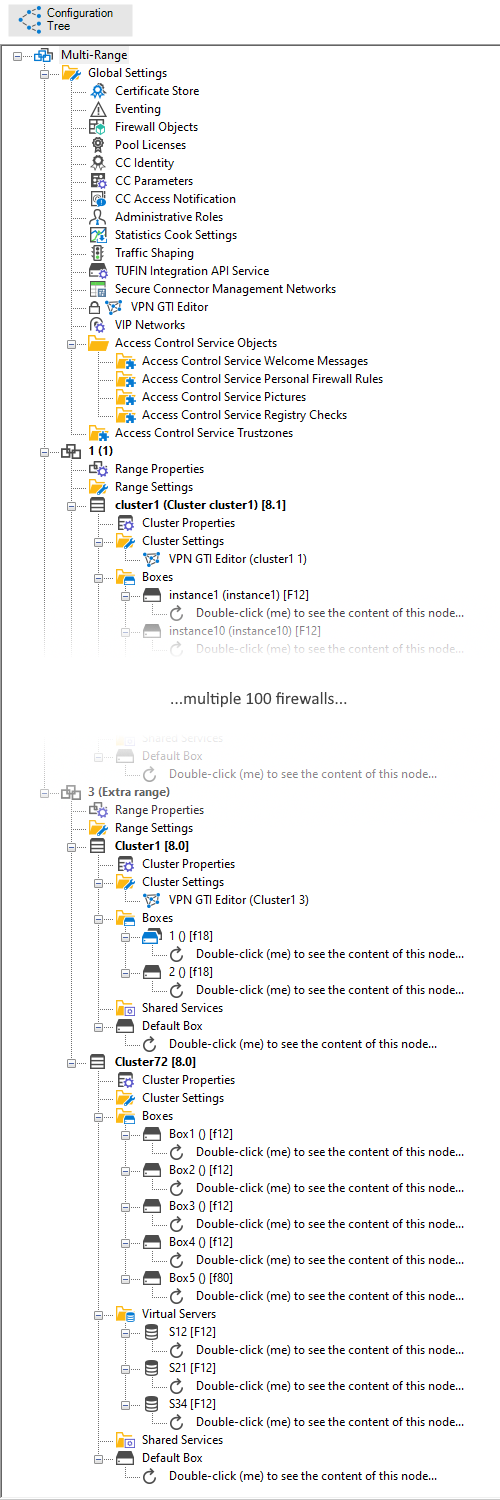To display any number of appliances in your Control Center, Firewall Admin builds up the configuration tree for all managed instances. If you manage several hundred appliances, however, it will not only require much more time to create the configuration tree, but administrators will also need more time to locate the appliance in question if its related node is located somewhere at a deeper level in the hierarchy of ranges and clusters.
Starting with firmware release 8.2.1, Barracuda Firewall Admin offers an option to speed up navigation times when accessing a specific node in very large configuration trees.
Depending on which level (Multi-Range, Range, or Cluster) you want the content of the configuration tree to be dynamically loaded, all subordinated nodes will be displayed with their subnodes. All nodes inside of a box will be displayed as a single node, thereby informing the user that its content will only be loaded on request:

Before You Begin
Ensure you are using Barracuda Firewall Admin release 8.2.1-60 or higher.
How to Enable Dynamic Loading for Large Configuration Trees
Step 1. Enable Dynamic Loading in Barracuda Firewall Admin.
- Start Firewall Admin.
- In the upper-left corner of Firewall Admin, click the left-most icon, which displays three horizontal lines.
- Click Settings.
- The view for Barracuda Firewall Admin Settings is displayed.
- Click the small triangle icon to the left of Admin and CC Settings.
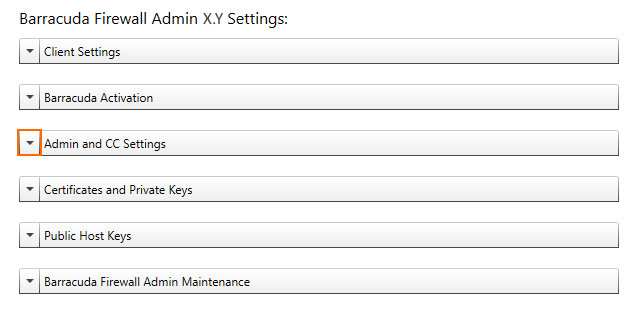
- The view for Admin and CC Settings is displayed.
- In the section CC Configuration Tree, select the check box for Expand a node in the CC Configuration Tree upon user request (fast loading for big CC trees).
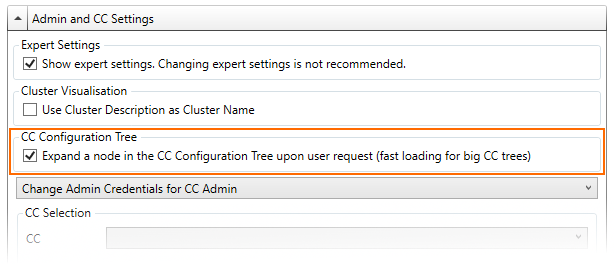
- If Firewall Admin is already connected to a Control Center, press the F5 key on your keyboard to refresh the view for the configuration tree.
Step 2. Verify that Dynamic Loading Is Working
Example 1: Expand all clusters inside of a range with dynamic loading.
- After refreshing the configuration tree, it will be displayed and all nodes will be collapsed.

- Right-click a range, i.e., 3 (Extra range)
- In the list, select Expand.
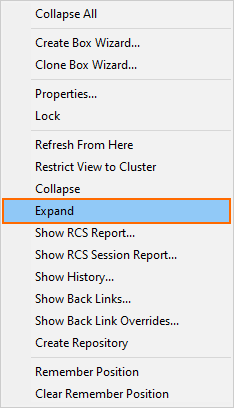
- The configuration tree now displays all clusters and hides all included boxes.
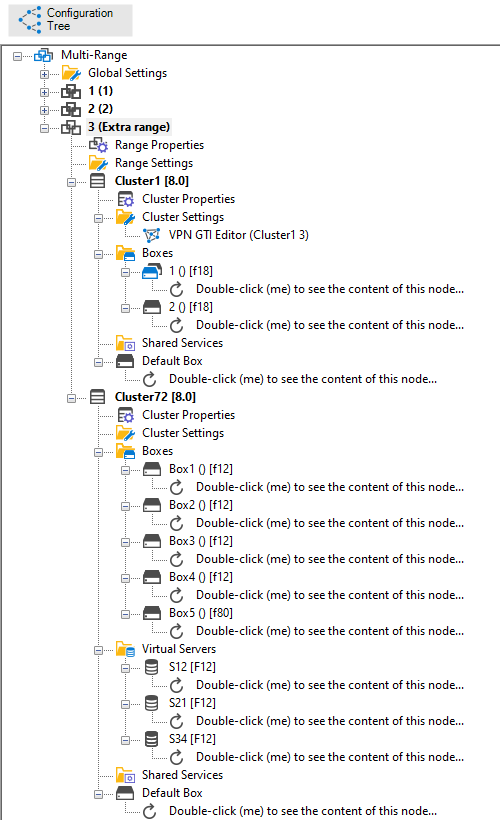
Example 2: Expand a single cluster inside of a range with dynamic loading.
- After refreshing the configuration tree, it will be displayed and all nodes will be collapsed.
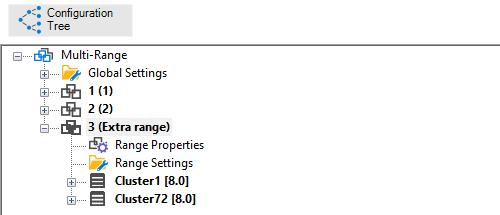
- Right-click a range, i.e., Cluster 1.
- In the list, select Expand.

- The configuration tree now displays the content of the cluster and hides all included boxes. All other ranges remain untouched.
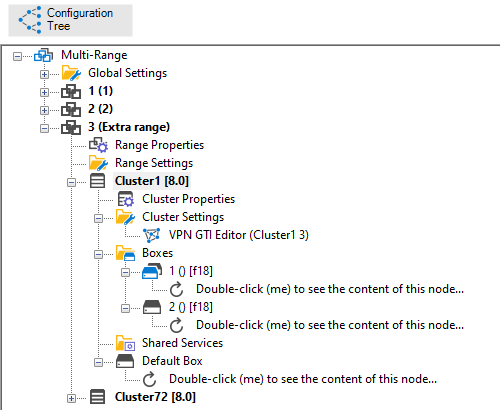
Example 3: Expand all ranges and clusters with dynamic loading.
- Right-click Multi-Range.
- In the list, select Expand.

- Except for the contained box nodes, all range and cluster nodes are displayed expanded with dynamic loading:
